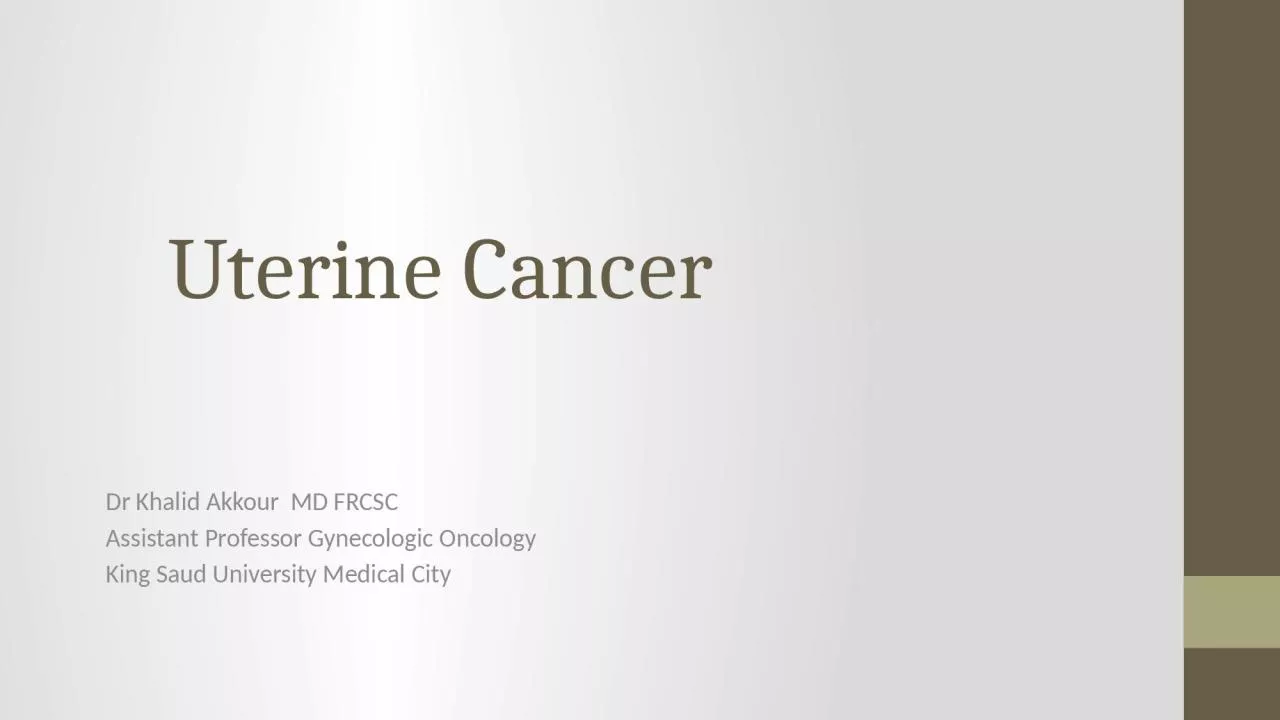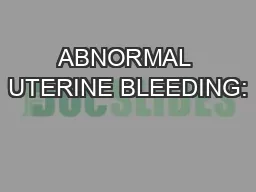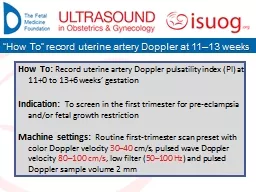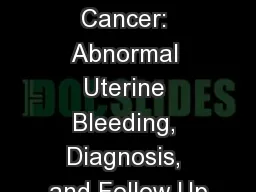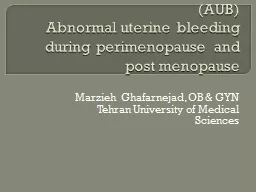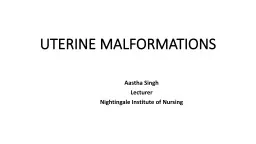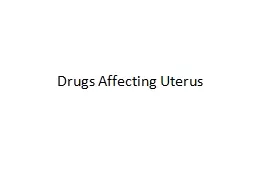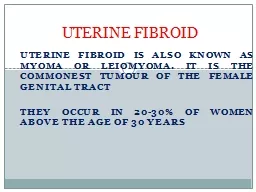PPT-Uterine Cancer Dr Khalid Akkour MD FRCSC
Author : amelia | Published Date : 2024-01-13
Assistant Professor Gynecologic Oncology King Saud University Medical City STRUCTURED OSCE ENDOMETRIAL CA 61 F with postmenopausal bleeding 1 Take a focused
Presentation Embed Code
Download Presentation
Download Presentation The PPT/PDF document "Uterine Cancer Dr Khalid Akkour MD FRC..." is the property of its rightful owner. Permission is granted to download and print the materials on this website for personal, non-commercial use only, and to display it on your personal computer provided you do not modify the materials and that you retain all copyright notices contained in the materials. By downloading content from our website, you accept the terms of this agreement.
Uterine Cancer Dr Khalid Akkour MD FRCSC: Transcript
Download Rules Of Document
"Uterine Cancer Dr Khalid Akkour MD FRCSC"The content belongs to its owner. You may download and print it for personal use, without modification, and keep all copyright notices. By downloading, you agree to these terms.
Related Documents

